How to Use AI For Business Development (Use Cases & Tools)
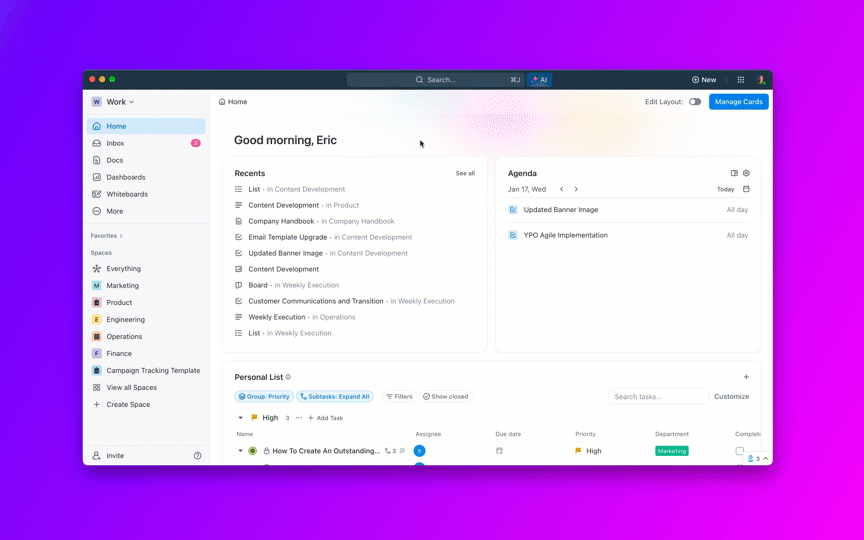
Sorry, there were no results found for “”
Sorry, there were no results found for “”
Sorry, there were no results found for “”

AI is reshaping how businesses grow, connect with customers, and close deals faster. From writing high-converting sales emails to identifying new leads, artificial intelligence is helping companies work smarter at every stage of business development.
McKinsey estimates that AI could add up to $4.6 trillion to global corporate profits by transforming how teams market, sell, and support their products.
So if you’re wondering how to actually use AI in your business growth strategy, this blog breaks it down for you, with real use cases, tools, and examples you can start using today.
Business development involves creating and implementing strategies to drive growth by focusing on internal business operations and external market opportunities. This means conducting market research, industry analysis, competitor tracking, and collecting future predictions.
The process impacts every department of your company, from marketing to human resources. Therefore, it becomes necessary to analyze different aspects, collect data, and plan future actions based on those insights.
Artificial intelligence is your assistant, helping you execute these processes. Here’s how it assists you:
🧠 Fun Fact: While 76% of consumers are concerned about misinformation with artificial intelligence, 65% of others choose to trust it.
The below quote by Sam Altman, co-founder and CEO of OpenAI, summarizes why you need to have AI integrated into your business development plan:
Right now, people talk about being an AI company. There was a time after the iPhone App Store launch where people talked about being a mobile company. But no software company says they’re a mobile company now because it’d be unthinkable to not have a mobile app. And it’ll be unthinkable not to have intelligence integrated into every product and service. It’ll just be an expected, obvious thing.
AI is no longer just a trend. Whether you want to place an order online, control home appliances, or make phone calls, AI is at the center of it all.
Here are six AI use cases that can ease your workload and increase operational efficiency:
Tasks like appointment scheduling, email follow-ups, and data entry are time-consuming and frustrating. They are also more prone to errors because extended periods of monotonous work can reduce one’s attention span.
AI-powered tools can take over to cut down repetitive tasks and replace them with intelligent automation. Task automation software like virtual assistants can also analyze your calendar and prioritize tasks based on deadlines and project importance to eliminate distractions.
Ways to implement AI automation:
AI-enabled predictive analytics uses real-time and historical data to forecast market trends, customer behavior, and upcoming shifts.
Studying these data-driven insights will help you anticipate opportunities and challenges, enabling you to plan your next move well.
Here’s how AI systems conduct data analysis:
Without loyal customers, there are no sales or brand names. The best way to build your consumer base is to inculcate meaningful relationships.
AI can segment your audience and personalize each individual’s experience by studying their unique preferences, interactions, and behavior.
This tailored approach to customer relationship management makes them feel heard and cared for and builds more meaningful connections.
Bring in AI tools here to:
🧠 Fun Fact: At least 65% of companies have adopted generative AI for a single business function, while a few do it for more than one. The two most common use cases are marketing and sales, and product and service development.
To find high-quality leads, you need to create targeted marketing materials. While the research can be overwhelming for anyone, algorithms are built differently.
AI can look through large volumes of data to identify prospects most likely to convert, saving your sales team time and effort.
Use AI systems to improve your future sales:
How would you stand out if more than two businesses sell the same product or offer similar services as yours? Through product differentiation—marketing your USP!
It requires a deep understanding of the market landscape, including ongoing trends, competitors’ vulnerabilities, and customers’ expectations. AI tools can help you track and analyze these metrics in real time.
Here’s how AI models help gain a competitive edge:
📚 Also Read: Growth Plan Templates to Build a Growth Strategy
Nobody wants to undersell their effort or drive the customer away with unrealistic price tags. The right balance in your pricing strategy increases market share and attracts more customers.
AI can suggest newer prices based on market demand, competitor pricing, and customer behavior. Remain competitive while maximizing revenue.
Here’s how to use AI in sales:
📌 Example: AI in business development
Let’s see how Accenture helped Procter & Gamble (P&G) implement AI to improve their product development process.
Challenges faced by P&G:
Solution by Accenture:
Accenture co-created a Human + Machine toolset with P&G. It helped them develop two key approaches—Explainable AI and Generative Networks.
While Explainable AI brought small and meaningful improvements to existing products by fine-tuning formulations, the Generative Networks guided developers into discovering entirely new formulations.
The latter system put together previously unconsidered ingredient combinations to suggest new ones. Therefore, P&G optimized existing products and partook in product innovation.
The results of this collaboration:
Now that you know how to use AI for operations management, explore these tools to integrate AI into business development.
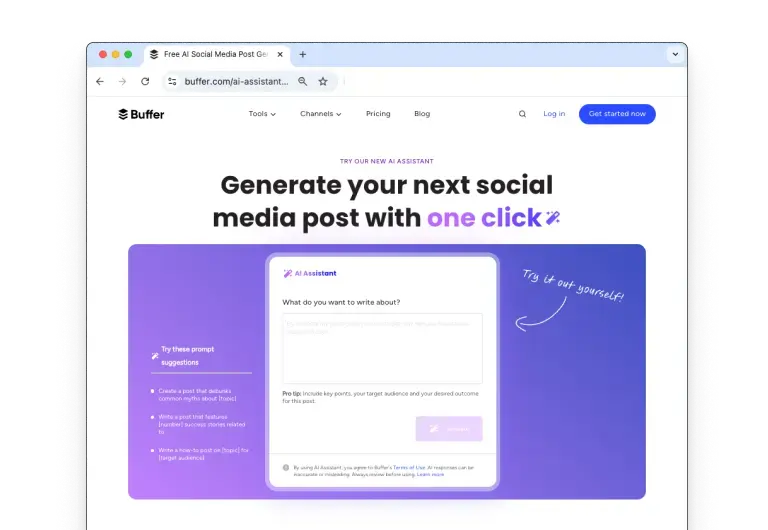
If your concern is how AI can help small businesses, then this tool is for you.
You can use Buffer and its built-in AI assistant to write, schedule, and publish social media content while simultaneously gathering insights. Its intuitive dashboard allows you to schedule posts across multiple platforms, thus eliminating the hassle of manual posting.
DreamHost AI Business Advisor is an AI tool for decision-making. If you have multiple businesses and need personalized advice, try this tool.
It uses ChatGPT 4.0 to answer your queries, has an in-built prompt library, and better remembers your context over time.
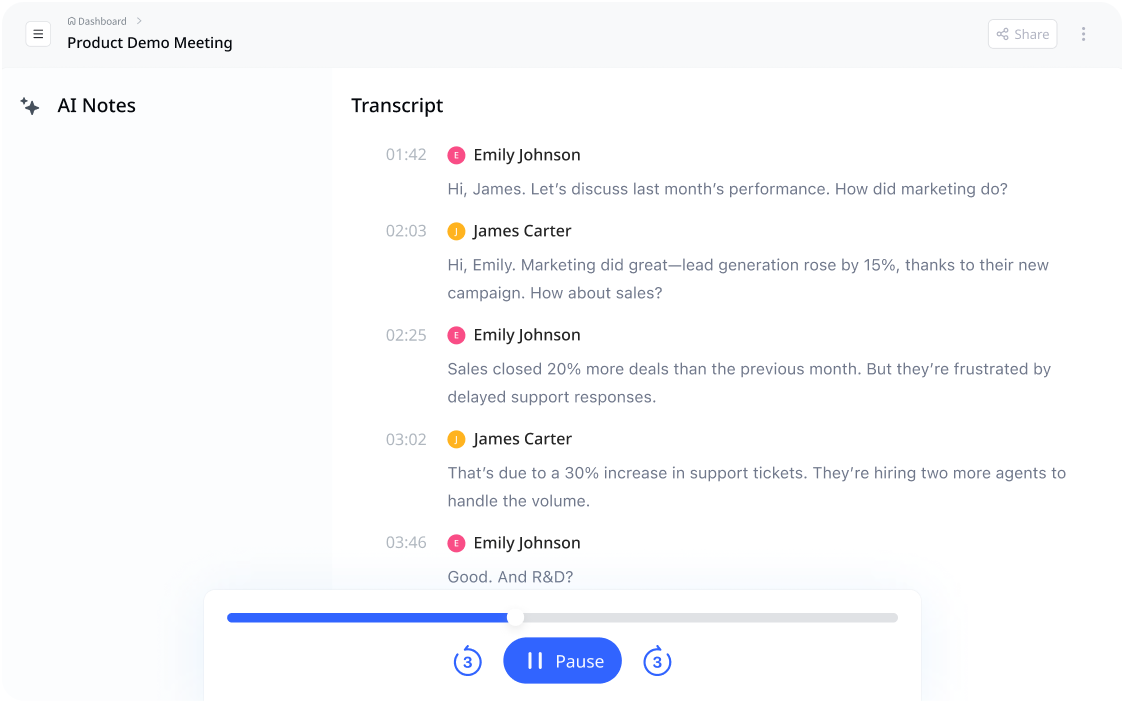
Notta records, transcribes, and summarizes your meeting conversations, providing highlights for key concepts and action items. Stop wasting time on long transcripts—let this AI tool do the heavy lifting.
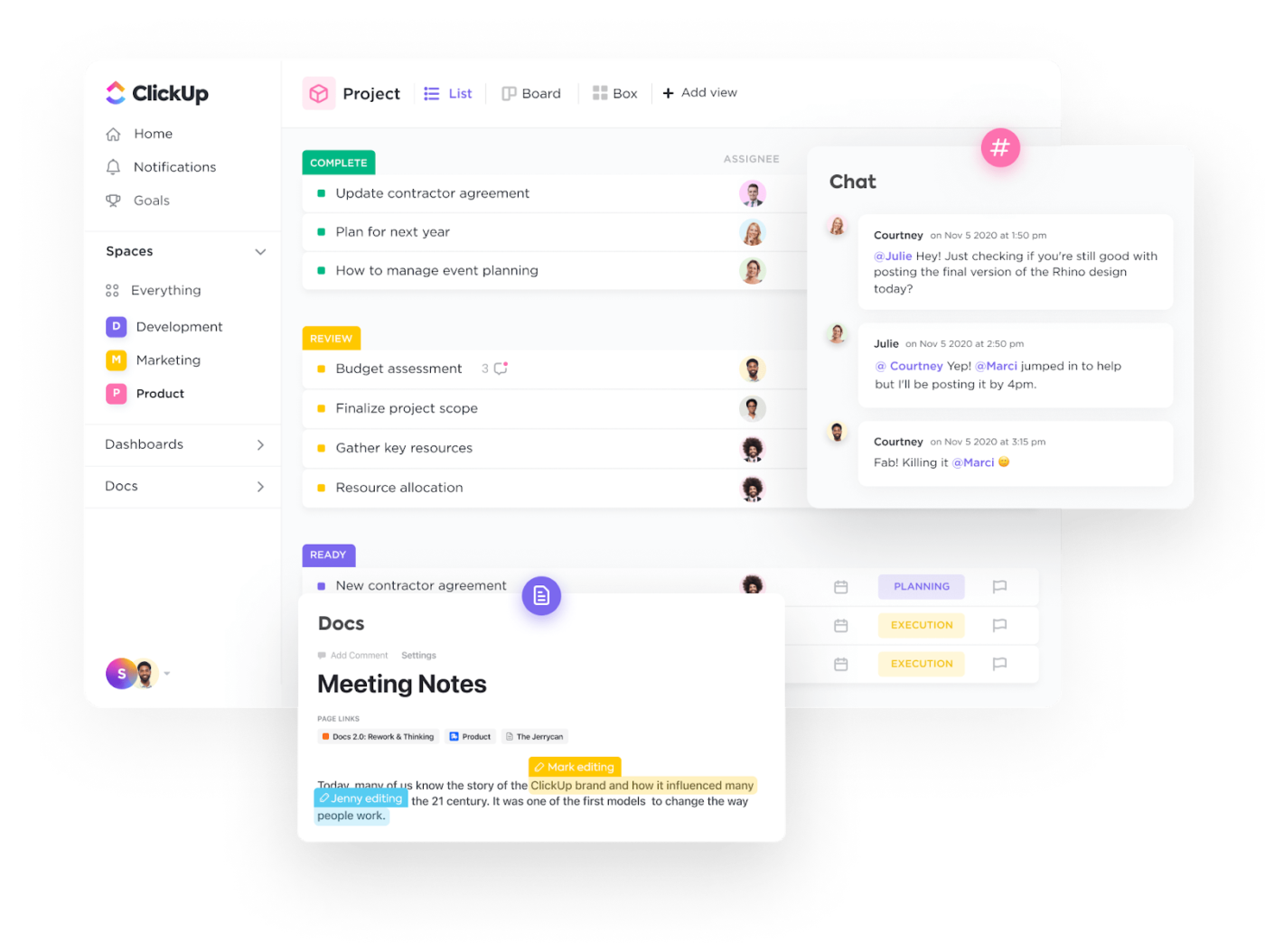
ClickUp is an all-in-one productivity platform designed to help businesses streamline their operations, manage projects, and boost collaboration. As an AI-powered tool, ClickUp offers intelligent features that support business development by automating repetitive tasks, providing actionable insights, and enhancing decision-making. This everything app for work brings knowledge management, team communication, and complete project management solutions, all powered by AI .
You can integrate its business management software with your workspace and manage every aspect of your workflow with AI. Let’s deep dive into some of its capabilities.
ClickUp’s built-in AI assistant, ClickUp Brain, is an integrated work solution for handling different business processes. Here’s how it can help you:
ClickUp Brain takes over the repetitive, time-consuming tasks by automatically generating project summaries, updating progress reports, and creating task lists based on meeting transcripts.
AI automation leads your team to spend less time on administrative overhead and more on strategic work.

Bonus: Brain users can choose from different AI models, like ChatGPT and Claude
Imagine having an assistant who sets up your tasks and monitors their progress. ClickUp Brain’s AI creates subtasks, triggers automatic stand-ups, and delivers real-time progress updates based on contextual data in your workflow.
It keeps all team members on the same page and forgoes the need for excessive meetings and manual status checks.

ClickUp Brain creates a centralized space for your organization by linking tasks, documents, and team communications, making your brainstorming sessions productive.
You can easily access historical contexts and data-driven insights to discuss a new product idea or refine a marketing strategy.
📮ClickUp Insight: A typical knowledge worker has to connect with 6 people on average to get work done. This means reaching out to 6 core connections on a daily basis to gather essential context, align on priorities, and move projects forward.The struggle is real—constant follow-ups, version confusion, and visibility black holes erode team productivity. A centralized platform like ClickUp, with Connected Search and AI Knowledge Manager, tackles this by making context instantly available at your fingertips.
ClickUp Brain isn’t limited to managing internal projects—it extends its capabilities to external market research. The tool can aggregate data from connected apps like Google Drive, GitHub, and Salesforce to view market trends and customer behaviors comprehensively.
For example, it can analyze the last marketing campaign’s performance and suggest optimal strategies for future ones or create an alert for new customer segments.
ClickUp Brain integrates with your CRM systems to provide personalized insights on customer behavior. The AI can track interactions, predict their needs, and even automate follow-up communications, promising customer satisfaction.
Check out how you can just type @𝗕𝗿𝗮𝗶𝗻 in ClickUp for instant support and smart suggestions.👇
Beyond ClickUp Brain, you can access ClickUp Dashboards to visualize real-time views of project progress, team productivity, and operational processes. It is your key to ensure that data is generated and actively used to improve performance.
Here’s how ClickUp Dashboards can help you:
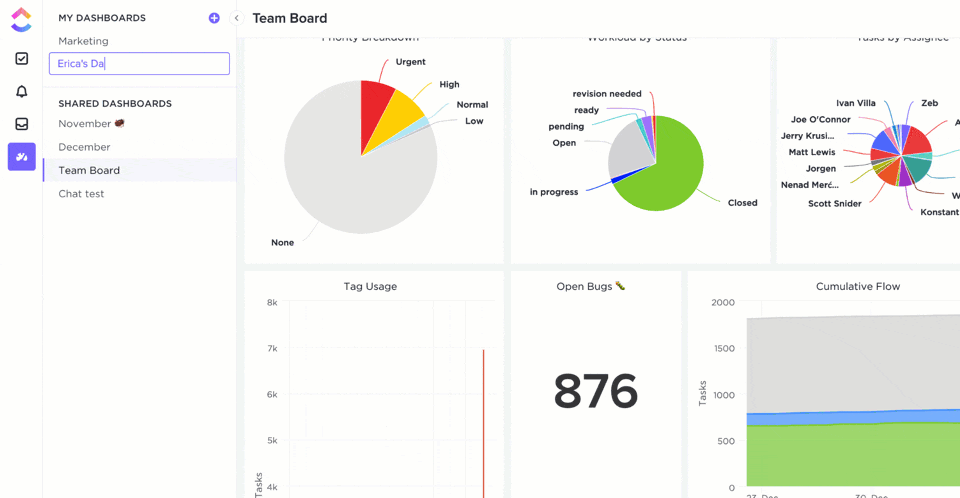
💡 Pro Tip: Use the ClickUp Dashboard to analyze performance metrics side-by-side, giving you clear insights into trends, progress, and areas needing attention. You can turn raw data into business insights by comparing different data sets—whether it’s performance over various periods, across teams, or between projects.
Also, ensure compliance and data security with ClickUp’s robust governance features, enhanced by AI-driven monitoring and alerts.
Mary Zargarian, CEO & Principal Consultant at Zargarian Consulting LLC, shared:
ClickUp is the heart of our business – our go-to business management platform. We have managed to consolidate our collaboration and reporting all in one system, giving our team visibility into our work and our clients visibility into what we’re doing for their business.
AI tools help you manage different aspects of your business. 89% of IT professionals and business decision-makers believe AI and machine learning are essential for achieving business goals. Here are five reasons why you shouldn’t overlook using AI:
👀 Did You Know? Approximately 49% of technology leaders have integrated AI into their core business strategy, while one-third have included it in their products and services.
Before implementing these methods to revolutionize business development, be aware of these three challenges. Consider their potential solutions to ensure responsible AI practices.
While 75% of companies have adopted AI, only 35% possess the necessary skills and training to leverage it effectively. This gap in specialized knowledge often hinders businesses from successfully implementing AI processes, potentially stalling innovation and growth.
Training programs and workshops to upskill employees on AI concepts, tools, and best practices can help tame this situation. Businesses can also bring AI specialists or consultants to bridge the knowledge gap during implementation.
AI solutions can be expensive, with costs related to software acquisition, infrastructure upgrades, and ongoing maintenance. For many businesses, these upfront investments can be a limitation.
Consider starting small and piloting AI in a specific area of your business to validate its ROI before expanding its use. Cloud-based AI solutions offer lower upfront costs and scalability options, making them a cost-effective alternative to on-premise solutions.
AI relies on data to process and analyze information effectively. Delivering accurate insights and crafting successful business development strategies demands error-free, complete, consistent, and relevant data.
However, many organizations struggle to meet these standards, resulting in skewed analytics and poor decision-making.
Establishing clear data standards, ensuring consistency across sources, and performing regular data quality assessments and audits can significantly improve data reliability and accuracy.
PWC’s Sizing the Prize Report mentions the ultimate benefit of adopting AI for business development:
The prize is being far more capable, in a far more relevant way, than your business could ever be without the infinite possibilities of AI.
The report also revealed that AI can contribute up to $15.7 trillion to the global economy by 2030—more than the current output of China and India combined.
To become a part of these numbers, let’s see which AI trends you must keep up with!
True to its name, the Person Plus AI strategy focuses on combining human expertise with technology instead of putting the two against one another. While AI tools analyze large data sets and automate repetitive tasks, humans can focus on implementing the suggested solutions.
Beyond content creation, generative AI has the potential to do a lot more. While 76% of marketers use it to write, 53% also applaud its ability to analyze data, personalize messages, build marketing campaigns, and optimize SEO strategy.
The same marketers also shared that generative AI has the potential to eliminate busy work and save them over five hours per week—the equivalent of over a month per year.
Have you interacted with Alexa or Siri? These virtual assistants and chatbots use voluminous data, machine learning, and natural language processing (NLP) to imitate human-like conversations, recognize speech, and understand text inputs in multiple languages.
The constant loop of human interactions and machine learning processes helps improve memory and context, thus delivering better responses.
Navigating these trends while planning a way to combat challenges can help you plan your business development strategy with AI! Are you ready?
👀 Did You Know? 78% of people believe that the benefits of AI outweigh its risks.
AI is rapidly transforming business development, making it essential, not optional. To stay ahead, you need the right tools and skills to harness its full potential.
ClickUp, together with ClickUp Brain, offers an all-in-one solution designed for business development professionals. With powerful AI features, you can automate repetitive tasks, gain actionable insights, and streamline your entire workflow.
Want to get your team up to speed? ClickUp University provides comprehensive training on everything from the basics to advanced features, ensuring your team can make the most of the platform. Plus, you can explore ClickUp for free and experience its capabilities firsthand.
With 1,000+ integrations, ClickUp seamlessly adapts to your existing processes—becoming your digital assistant for smarter, faster business growth. Sign up for ClickUp today and unlock the future of business development!
© 2025 ClickUp